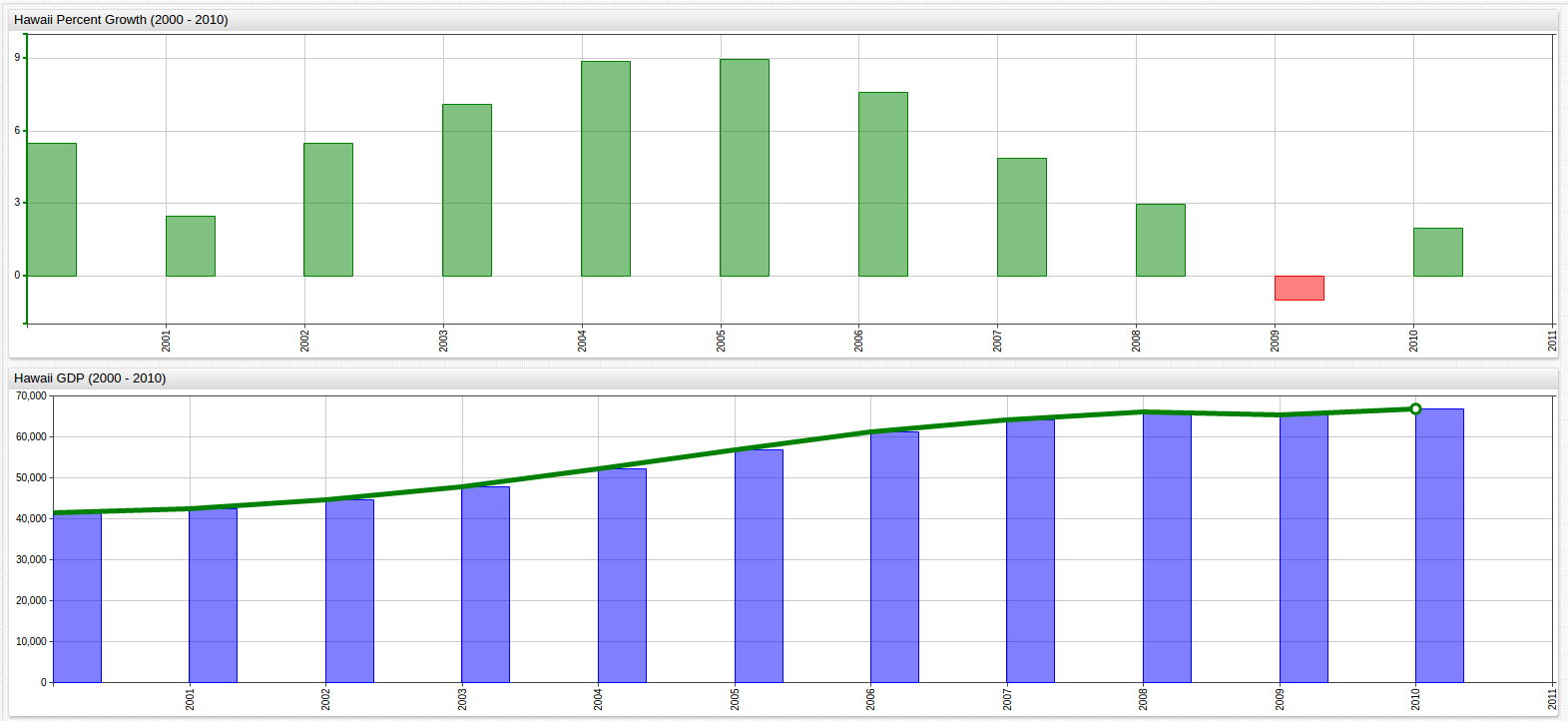Island Living is Recession Proof

Keywords
column, style, alert-expression, alert-style
Overview
Hawaii is not often considered among the economic powerhouses of the United States, but it seems the tiny archipelago two-and-a-half thousand miles from the California coastline knows something the rest of us do not.
Using data from the State of Hawaii Department of Business, Economic Development, and Tourism, and the ATSD, the economic performance of the fiftieth state can be explored using a number of analytic tools. Shown above are two visualizations of the Hawaiian economy: its percent growth from 2000 to 2010 and its nominal GDP value for the same years. GDP is generally considered to be the godfather of economic indicators and with a state that imports close to 90% of its food, a dollar amount subtracted from the GDP and estimated by the State to be about three billion dollars, positive growth results amid global recession are no small feat.
Comprising a modest 0.45% of the overall United States GDP, the Aloha State makes up for its below average wealth production and high import deficit with percent growth that is significantly higher than the US Average, and decline that is significantly lower than the US Average. Compare the numbers below:
| Year | Hawaii Percent Growth | United States Percent Growth | Nominal Difference (Hawaii Growth - US Growth) |
|---|---|---|---|
| 2000 | 5.5% | 4.09% | 1.41% |
| 2001 | 2.5% | 0.98% | 1.52% |
| 2002 | 5.5% | 1.70% | 3.80% |
| 2003 | 7.1% | 2.81% | 4.29% |
| 2004 | 8.9% | 3.79% | 5.11% |
| 2005 | 9.0% | 3.35% | 5.65% |
| 2006 | 7.6% | 2.67% | 4.99% |
| 2007 | 4.9% | 1.78% | 3.12% |
| 2008 | 3.0% | -0.29% | 3.29% |
| 2009 | -1.0% | -2.78% | 1.78% |
| 2010 | 2.0% | 2.53% | -0.53% |
Source for US GDP Data: The World Bank.
Measuring this growth over the entire 11-year period to compare effective annual growth, Hawaii averaged a total of 4.96% per year effective growth compared to the United States' effective growth rate of just 1.86% per year. This metric averages the growth of each entity over the observed time period to show the annual growth rate if it remained constant. Effective growth (or interest) rate is often used to judge investments with a compounding interest rate, however it can be adopted to these purposes to accurately provide average performance benchmarks for Hawaii and the United States.
Even during the worst year of the eponymous Great Recession, the state of Hawaii continued to see growth locally, and it was not until the final observed year that the United States GDP Growth surpassed a tiny economy built on tourism and agriculture, two notoriously volatile industries. Hawaii is also in the top 20 states when considering per capita GDP, another popular economic indicator.
Whether the warm sunshine, the clear water, or the endless beaches drive Hawaiian growth is unclear but economic stability and opportunity can be added to the list of benefits of island living.
